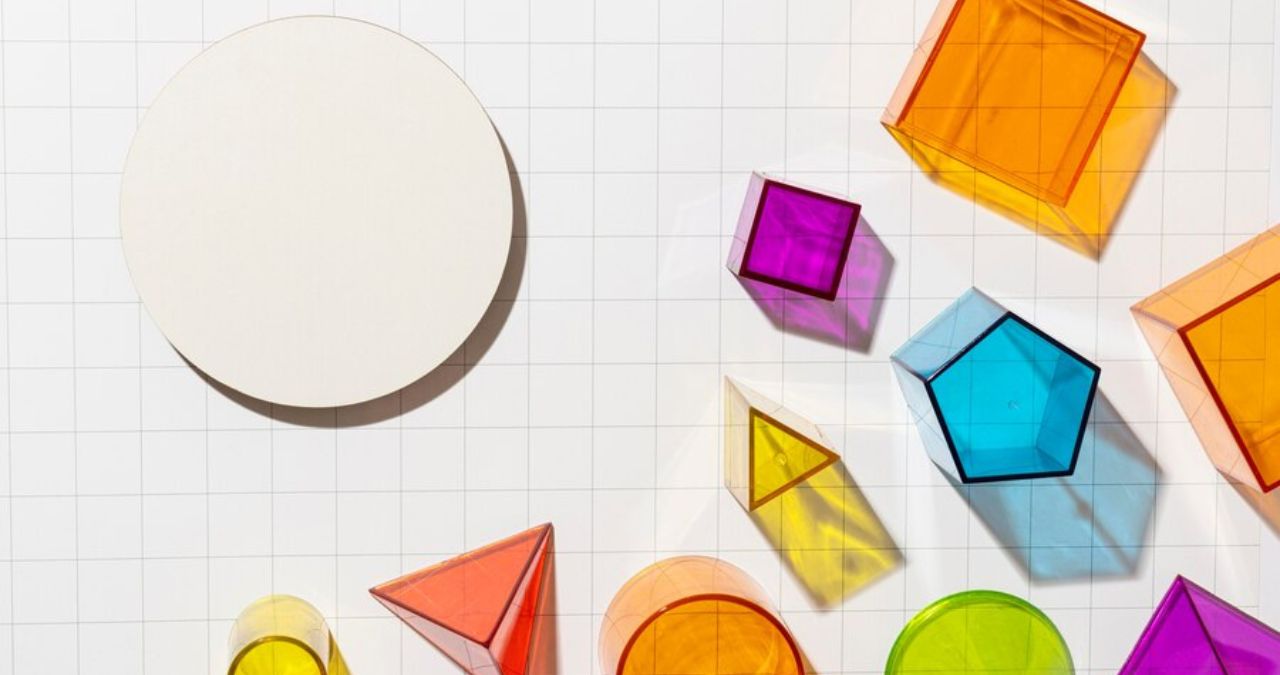BLOG
Geometry Spot: Exploring the World of Geometry

Geometry Spot has fascinated learners, mathematicians, and explorers for centuries. It forms the foundation of many aspects of our daily lives—architecture, art, engineering, and even technology. If you’ve ever wondered about the role geometry plays in shaping the world or want to deepen your understanding, this blog is for you.
This post dives into the core concepts of geometry and its applications while sparking curiosity about its intricate and exciting world. Whether you’re a student, teacher, or simply someone intrigued by the building blocks of shapes and space, you will leave with valuable insights into this essential branch of mathematics.
What Is Geometry Spot? The Foundation of Spatial Understanding
Geometry Spot is the branch of mathematics that deals with shapes, sizes, dimensions, and the properties of space. From the ancient ruins of Greece to modern supercomputers designing skyscrapers, geometry has been central to understanding and manipulating physical space.
By studying points, lines, surfaces, solids, and their relationships, geometry allows us to solve real-world challenges and create artistic masterpieces. It forms the bedrock of spatial reasoning and problem-solving—a key skill applicable far beyond just mathematics.
Whether designing a bridge or plotting coordinates for a drone, understanding geometry turns abstract ideas into concrete reality.
Two Primary Types of Geometry
To better understand geometry, it’s important to distinguish between its two primary types:
- Euclidean Geometry
This is the traditional form of geometry taught in schools, based on the work of mathematician Euclid. It studies flat surfaces and includes concepts such as lines, angles, triangles, circles, and more. Think of it as the geometry of the physical world around you—tables, rooms, and everyday objects.
- Non-Euclidean Geometry
Non-Euclidean geometry explores curved surfaces and is essential for understanding more complex phenomena like spheres, the curvature of the Earth, or even the fabric of the universe in Einstein’s theory of relativity. For instance, when designing GPS systems, it’s necessary to account for the Earth’s curved surface, which is calculated using spherical geometry.
The Practical Applications of Geometry
Geometry isn’t just an abstract field—it’s a critical player across industries and daily life. Here’s how geometry revolutionizes the world in tangible ways.
1. Architecture and Design
Architects rely heavily on geometric principles when designing buildings. From the stability of a triangular truss in a roof to the light-catching angles of a glass facade, geometry ensures functionality meets aesthetics.
Famous buildings like the Sydney Opera House or the Great Pyramid of Giza are monuments to geometry’s mastery in design and engineering. Geometry enables architects to calculate load-bearing elements, predict material requirements, and create visual appeal.
2. Technology and Engineering
Geometry is the core enabler of many modern technologies. Engineers and scientists use concepts like vectors, three-dimensional modeling, and coordinate geometry to design products, analyze systems, and create groundbreaking technology.
For example:
- Aerospace Engineering relies on geometry for designing aircraft and spaceship parts.
- Computer Graphics use geometric algorithms to render images in 2D and 3D, creating everything from blockbuster movies to video games.
3. Robotics and Artificial Intelligence
Robots require an understanding of the spatial world to interact efficiently. Geometry enables robots to map environments, calculate distances, and perform maneuvers with precision. For instance, self-driving cars analyze their surroundings using geometric principles like triangulation and surface estimation.
4. Art and Creativity
Geometry can also be found in the organic symmetry of a sunflower or the perfect proportions of Da Vinci’s “Vitruvian Man.” Artists and designers use geometric patterns to create visually captivating works. Think about tessellations in graphic design or the symmetry of fashion designs—geometry is the hidden architect behind these innovative creations.
5. Everyday Problem-Solving
From calculating the area of a garden plot to finding the shortest route to a destination, geometry simplifies everyday challenges. Even activities like packing a suitcase involve spatial reasoning rooted in geometric principles.
Essential Concepts—The Building Blocks of Geometry
Aspiring to master geometry? Here are some essential concepts that form the core of this mathematical discipline.
Points, Lines, and Planes
- Point: The most basic element in geometry, representing a location without any size.
- Line: A collection of points stretching infinitely in two directions.
- Plane: A flat, two-dimensional surface extending infinitely.
These simple elements lay the foundation for more complex objects like angles and shapes.
Angles and Triangles
- Angles measure the space between two intersecting lines, forming the basis for virtually every shape.
- Triangles are particularly significant in geometry as they represent the simplest polygon. By breaking down shapes into triangles, equations like the Pythagorean Theorem become essential for measurement and calculation.
Circles and Polygons
- Circles represent infinite symmetry with unique properties such as radius, circumference, and area.
- Polygons are multi-sided shapes. From rectangles to hexagons, polygons are everywhere in physical and abstract forms.
How to Explore and Enhance Your Understanding of Geometry
Are you wondering how to engage with geometry deeper? Here are some hands-on ways to immerse yourself in this fascinating subject.
- Solve Real-World Problems
Apply geometry’s concepts to practical problems—measure a room for furniture placement, or design a garden layout using calculated dimensions.
- Digital Tools and Software
Use tools like AutoCAD (for architectural design) or Geogebra (for interactive geometry learning). These platforms bring theoretical concepts to life.
- Expand Knowledge with Advanced Topics
Explore more advanced geometry fields like analytic geometry, which bridges the gap between algebra and geometry using graphs and equations.
- Collaborate with a Community
Join math forums or attend workshops to exchange ideas, discuss challenges, and learn new techniques in solving geometric puzzles.
- Teach It
Teaching someone else is one of the most effective ways to deepen your understanding of geometry. Guide a friend or peer to help them visualize complex concepts.
Geometry Is Everywhere—Shape Your Understanding
Geometry is far more than just angles and equations—it defines the world we live in, offering an unparalleled lens for solving problems and appreciating beauty. Its relevance in architecture, technology, and creative pursuits underscores its importance, not just as an academic subject but as a practical toolkit for modern life.
Eager to master the art and science of geometry? Start by exploring its applications in your daily life, incorporating digital learning platforms, or discussing challenges with fellow enthusiasts. The world of geometry awaits—start shaping your expertise today!
BLOG
Magnum PI Hawaiian Shirt: A Timeless Icon of Style and Culture
For decades, the Magnum PI Hawaiian Shirt has been more than just a piece of clothing—it’s been a symbol of laid-back island vibes, individuality, and effortless cool. And in the realm of pop culture, no Hawaiian shirt stands out more than the iconic red-and-black patterned one worn by Tom Selleck in the 1980s TV show Magnum, P.I.. The shirt isn’t just another piece of fabric; it’s a tribute to a bygone era, a fan favorite, and a timeless icon that continues to captivate new generations of fashion enthusiasts.
But what makes the Magnum PI Hawaiian shirt so legendary? Let’s take a closer look at its history, its cultural resurgence, and tips for incorporating this bold style icon into your wardrobe today.
The Story Behind the Magnum PI Hawaiian Shirt
The Origin of the Iconic Shirt
The Hawaiian shirt—or Aloha shirt—is steeped in history. Its origins date back to the 1930s in Hawaii, where it emerged as a fusion of Japanese-inspired designs and Western-style tailoring. Over time, the shirts evolved to reflect Hawaii’s local culture, often featuring bright florals, tropical scenery, and bold colors.
When Magnum, P.I. premiered in 1980, the show captured the beauty, mystery, and laid-back lifestyle of Hawaii. And at its center was private investigator Thomas Magnum, played by the effortlessly charismatic Tom Selleck. Selleck’s Hawaiian shirt, produced by a local brand called Paradise Found, featured a red base with black jungle bird motifs—a bold look that perfectly matched Magnum’s easy-going yet fearless personality.
The shirt came to define Magnum’s image. It wasn’t just wardrobe—it was a character unto itself, representing Hawaiian culture, adventure, and Selleck’s unique blend of humor and rugged charm.
How the Shirt Gained Cult Status
The Magnum, P.I. Hawaiian shirt exploded into pop culture, thanks to the show’s global popularity throughout the 1980s. Tom Selleck’s mustachioed charm paired with this bold and carefree look resonated with viewers, transforming the shirt into an unmistakable icon.
Fashion aficionados embraced it for its distinct pattern and saturated hues, while TV fans sought to emulate Magnum’s swagger. Over the years, celebrity endorsements and nostalgic reboots have kept the shirt alive as a beloved pop culture relic.
Now, decades later, the Magnum PI Hawaiian shirt transcends mere costume status—it remains a symbol of individuality, nostalgia, and unconventional style.
Why the Magnum PI Hawaiian Shirt Endures
Some fashion icons fade away as the decades pass, but the Magnum PI Hawaiian shirt has managed to hold its own. Why has it remained relevant while other trends have fallen by the wayside?
The Power of Nostalgia
The resurgence of 1980s and 1990s fashion trends has fueled the Magnum PI Hawaiian shirt’s comeback. Millennials and Gen Z, drawn to the aesthetics of the past, are finding inspiration in retro styles that exude authenticity and personality. The shirt serves as a reminder of a simpler time when bold statements were unapologetically embraced.
An Expression of Individuality
The Hawaiian shirt worn by Tom Selleck isn’t just visually striking—it’s a defiant statement against conformity. Unlike plain, muted tones often seen in conventional menswear, the Magnum PI Hawaiian shirt’s bold pattern and bright colors invite the wearer to stand out and break societal norms.
A Blend of Comfort and Confidence
Fashion trends come full circle when a piece offers equal parts style and function. The Magnum shirt does both. Its lightweight fabric and relaxed fit make it practical and breathable—ideal for hot climates or casual outings. Pair that with its vibrant design, and you get a timeless piece that allows people to feel both confident and comfortable.
How to Style a Magnum PI Hawaiian Shirt
If you’re inspired to channel your inner Magnum, here’s how you can rock the iconic Hawaiian shirt with contemporary finesse while staying true to its retro vibes:
1. Keep It Casual
Pair the Hawaiian shirt with simple denim shorts or relaxed-fit khakis for that classic island flair. Add a pair of boat shoes or sandals, and you’re good to go for a weekend barbecue or a casual night out. Roll up your sleeves for an extra laid-back touch.
2. Layer It… Like a Pro
Not quite ready to rock the shirt as a standalone statement? Try layering it. Leave it unbuttoned over a plain white or black T-shirt to create a bold yet approachable aesthetic.
3. Elevate with Tailoring
For those seeking to add sophistication to the fun look, consider layering the Hawaiian shirt under a linen blazer. Opt for neutral-colored trousers and loafers to balance the casual and polished elements, making this the perfect outfit for summer evenings.
4. Match the Vibes
Keep accessories true to the Magnum spirit. A pair of aviator sunglasses instantly channels Tom Selleck’s iconic swagger, while a simple leather strap watch completes the look in subtle style.
5. Less Is More
The shirt is already a head-turner, so keep the rest of your outfit understated. Stick to solid colors for pants, shoes, and accessories—this allows the shirt to remain the focal point.
Where to Find Your Own Magnum PI Hawaiian Shirt
Hunting for your very own Magnum PI-inspired Hawaiian shirt? Look no further! Many retro fashion retailers specialize in vintage Paradise Found designs, recreating the classic red jungle bird pattern. Online platforms like eBay and Etsy also feature original prints for the nostalgic collector.
Alternatively, modern brands now pay homage to the original Magnum design, infusing it with slight updates to cater to today’s trends. Whichever option you choose, don’t hesitate to add your personal twist.
The Magnum PI Shirt’s Legacy in Pop Culture
From TV screens to modern-day Instagram posts, the Magnum PI Hawaiian shirt proves that style, when done authentically, never truly fades. It has graced costume parties, inspired fashion designers, and even popped up in countless parodies and tributes.
Fashion influencers on platforms like TikTok and Instagram have reignited the popularity of Hawaiian shirts, often referencing Magnum’s iconic red-and-black look. Meanwhile, reboots of Magnum, P.I. have introduced Magnum’s style (and shirt) to a whole new generation of fans.
Longtime fans of the show will always appreciate the sentimental ties to Tom Selleck, but new fans see it as a way to add fun, vibrancy, and personality to their wardrobe.
Make a Bold Statement with Magnum Style
The Magnum PI Hawaiian shirt isn’t just a piece of clothing—it’s a symbol of individuality, confidence, and the timeless allure of living life your own way. Whether you’re a diehard Magnum, P.I. fan or new to this retro trend, the Magnum shirt offers an easy way to inject your wardrobe with nostalgic appeal and adventurous spirit.
Why not add a splash of Magnum-style boldness to your closet? Trust us—it’s a conversation starter you won’t regret.
Whether thrown over a T-shirt or tucked perfectly into crisp chinos, the Magnum PI Hawaiian shirt’s vibrant colors and rich cultural history keep it firmly planted as a timeless piece of fashion. Time to decide—are you ready to bring a piece of TV history into your everyday looks?
BLOG
Moddroid Mechat: The Ultimate Resource for Gamers and Developers

Gaming and app development have always thrived on innovation and creativity. Whether you’re a casual gamer or a developer eager to stay ahead of the curve, having a platform that combines a rich variety of modified apps, game tools, and an insightful community is a game-changer. Enter Moddroid Mechat, a powerhouse resource catering to both gamers and developers, offering features that redefine interaction, exploration, and customization in the digital landscape.
This blog will explore what makes Moddroid Mechat the ultimate hub for gamers seeking enhanced gaming experiences and developers striving to perfect their creations. From the platform’s offerings to its practical use cases, we’ll cover it all.
What is Moddroid Mechat?
At its core, Moddroid Mechat is a platform built for anyone who loves games or creates them. It combines a vast library of modded apps and games with an active community dedicated to discussing mods, sharing techniques, and improving gaming experiences. The platform offers modded APKs (Android Package Kits) that rewind traditional limits, unlocking premium features, unlimited resources, and smoother functionalities.
For developers, Moddroid Mechat serves as a testing ground and community hub where feedback and interaction with users offer an avenue to refine their projects.
By bridging the gap between users and creators, Moddroid Mechat revolutionizes both app consumption and development.
Why Gamers Love Moddroid Mechat
Moddroid Mechat stands out from standard app stores, offering features designed to elevate the player experience from average to extraordinary. Here’s why:
1. Access to Modded Games and Applications
Gamers can find modded versions of their favorite apps and games, unlocking premium features that are typically hidden behind paywalls. Want more in-game currency? Need better characters or equipment? Moddroid Mechat makes it possible with just a click.
2. Enhanced Gaming Experiences
With mods that allow players to tweak game mechanics, graphics, and customizations, gamers experience titles like never before. For example, visual mods transform the aesthetic of basic games into jaw-dropping vistas, while performance mods eliminate lag for seamless gameplay.
3. Regular Updates for Popular Apps
Moddroid Mechat ensures their platform is always up-to-date with the latest versions of modded games, keeping players on the cutting edge. Plus, the dedicated team behind the platform constantly releases new content.
4. Vibrant Community
The platform fosters a supportive community where users can share feedback and strategies or request mod improvements directly from developers. The community aspect adds a layer of collaboration and friendship, transforming the gaming experience into something truly interactive.
5. Safe Downloads
When downloading modified APKs, security can be a concern. Moddroid Mechat ensures all APKs are scanned for potential risks, creating a safe environment for users to explore new games and features worry-free.
How Moddroid Mechat Helps Developers
Game and app developers looking to push boundaries will likewise find Moddroid Mechat an indispensable resource. Here’s how:
1. User Testing Environment
Moddroid Mechat doubles as a testing space where developers can showcase unreleased or beta versions of apps. Gamers provide hands-on feedback, helping developers identify bugs, user pain points, and areas for improvement early in the development process.
2. Community Insights
By observing in-depth discussions within the platform’s community, developers gain a better understanding of user desires. For instance, developers of a tactical RPG may notice players consistently requesting character customizations—valuable insights for future updates.
3. Faster App Iterations
Testing updates with Moddroid’s engaged user base accelerates the process of improving app quality. Developers can iterate quicker, fine-tuning software with regular feedback loops.
4. Real-Time Interaction with Players
Developers can communicate directly with end-users to discuss features, improvements, or technical fixes in real time. This transparency and collaboration strengthen bonds between developers and their audience.
5. Build Awareness for New Apps
Releasing apps on platforms like Moddroid Mechat increases visibility among enthusiastic early adopters who are eager to try new tools and games.
How to Use Moddroid Mechat
Getting started with Moddroid Mechat is simple, and almost anyone—from beginners to seasoned gamers and developers—can jump right in. Follow these steps to start reaping the rewards:
For Gamers:
- Create an Account
Sign up on the Moddroid Mechat platform to access its library and community features.
- Search for Your Favorite Games/Apps
Use the search bar to locate modded versions of your go-to apps.
- Download and Install
Click “Download,” follow the installation prompts, and ensure you’ve enabled “Unknown Sources” on your Android device if needed.
- Join the Community
Participate in discussions, leave reviews, and chat with other users to make the most out of your gaming experience.
For Developers:
- Sign Up as a Creator
Join Moddroid’s platform and mark yourself as a developer to share your projects.
- Upload Beta Versions of Your App
Make your game available for testers or beta users who provide valuable feedback.
- Engage with the Community
Respond to user questions, collect suggestions, and adapt your project based on player preferences.
- Track Analytics and Feedback
Use data from downloads, reviews, and user interactions to refine your app.
- Grow Your Brand
Leverage the platform to gain exposure and build a base of loyal users who’ll stick with your app development process.
Why Moddroid Mechat is a Game Changer
Moddroid Mechat isn’t just another app platform—it’s a dynamic ecosystem where gamers and developers thrive together. With its ability to elevate gaming experiences and assist in app development, it has positioned itself as an indispensable tool for anyone invested in games. Highlights include:
- Innovation for Gamers: Every download unlocks a new way to explore and enjoy games.
- Support for Developers: Connecting with a highly engaged community leads to insights and improvements.
- All-in-One Solution: From modding apps to fostering collaboration, Moddroid Mechat is a one-stop shop.
Final Thoughts—Transform Your Gaming or Development Journey
Whether you’re looking to enhance your gameplay or perfect your app, Moddroid Mechat’s offers the tools and community to help you succeed. With modded applications, personalized interaction, and safe downloads, this platform promises constant growth and excitement for gamers and developers alike.
Are you ready to join the Moddroid Mechat’s revolution? Jump in today—level up your gaming or development experience with features designed to keep you one step ahead of the curve!
BLOG
Husky Pro HDS500L1008: A Comprehensive Overview

One such tool that has garnered attention for its performance and reliability is the Husky Pro HDS500L1008. This article aims to provide a detailed overview of this model, its features, applications, and why it stands out in the market.
Husky Pro HDS500L1008, it is essential to understand the Husky Pro brand itself. Established as a prominent player in the tools and equipment industry, Husky Pro is widely recognized for producing high-quality products designed for both professionals and DIY enthusiasts. The brand focuses on innovation, durability, and functionality, ensuring that their tools can withstand even the toughest working conditions.
What is the Husky Pro HDS500L1008?
The Husky Pro HDS500L1008 is a versatile and powerful tool designed for automotive applications, specifically suited for mechanics and repair professionals. This model is well-regarded for its ergonomic design and robust features aimed at providing convenience and efficiency during work. Whether you are dealing with intricate automotive repairs or handling heavy-duty tasks, the HDS500L1008 stands out as a reliable choice.
Key Features of the Husky Pro HDS500L1008
1. Powerful Performance
One of the most notable aspects of the Husky Pro HDS500L1008 is its powerful motor. Engineered to deliver consistent performance, this tool is capable of handling a wide range of tasks. The high torque output makes it an excellent choice for loosening tough bolts or fasteners without straining the operator.
2. Ergonomic Design
Ergonomics play a pivotal role in the usability of any tool, and the Husky Pro HDS500L1008 does not disappoint in this department. The tool features a comfortable grip that reduces hand fatigue, allowing users to operate it for extended periods without discomfort. The lightweight design further enhances maneuverability, enabling easy access to tight spaces in an automotive setting.
3. Durability and Build Quality
Constructed with high-quality materials, the Husky Pro HDS500L1008 is designed to withstand the rigors of daily use. Its rugged construction ensures that it can handle rough handling and harsh working conditions, making it a durable investment for professionals.
4. Versatility
The Husky Pro HDS500L1008 is not limited to automotive applications. Its versatility allows it to be used in various other fields, including construction, maintenance, and even DIY projects at home. This multifunctional capability makes it a valuable addition to any toolbox.
5. Integrated Safety Features
Safety is a crucial consideration when using power tools. The Husky Pro HDS500L1008 is equipped with several safety features designed to protect users during operation. These include automatic shut-off mechanisms, heat resistance, and protective casings that prevent accidental contact with moving parts.
Applications of the Husky Pro HDS500L1008
Understanding the applications of the Husky Pro HDS500L1008’s can help potential users appreciate its value better. Here are a few areas where this tool shines:
Automotive Repair
As a go-to tool for mechanics, the Husky Pro HDS500L1008’s is ideal for automotive repairs, including changing tires, performing engine work, and handling general maintenance tasks. Its powerful performance and ease of use simplify what would otherwise be labor-intensive jobs.
Construction Projects
Contractors and construction workers can benefit from the HDS500L1008’s versatility. Whether it’s installing structural components or carrying out routine maintenance, the tool’s features are tailored for heavy-duty work.
Home DIYing
For homeowners who enjoy taking on projects themselves, the Husky Pro HDS500L1008’s offers the functionality needed for various tasks. From assembling furniture to making home improvements, it is a handy tool to have on hand.
Why Choose the Husky Pro HDS500L1008?
Enhancing Work Efficiency
One of the primary reasons to opt for the Husky Pro HDS500L1008’s is its ability to enhance work efficiency. With its powerful motor and user-friendly design, tasks can be completed more quickly and with less physical strain. This efficiency is especially crucial for professionals who rely on tools to maximize productivity.
Cost-Effectiveness
Investing in high-quality tools can lead to significant long-term savings. The durability and performance of the Husky Pro HDS500L1008’s ensure that it can withstand the test of time, reducing the need for frequent replacements and repairs. This makes it a cost-effective choice for both businesses and individuals.
Positive User Feedback
A significant indicator of a product’s reliability is user feedback. The Husky Pro HDS500L1008’s has received positive reviews from users for its performance and ease of use. User testimonials often highlight its efficiency in handling various tasks and its robust build quality.
Conclusion
The Husky Pro HDS500L1008 is more than just a tool; it’s an investment in efficiency and reliability. With its powerful performance, ergonomic design, and versatility, it stands out as a top choice for professionals and DIY enthusiasts alike.
-

 EDUCATION11 months ago
EDUCATION11 months agoHighlights From the September 18 Board of Education Meeting
-

 BLOG10 months ago
BLOG10 months agoWho Is the Father of CSK? A Deep-Dive Into Chennai Super Kings’ Dominance in Cricket
-

 PLATFORM10 months ago
PLATFORM10 months agoThe Ultimate Guide to MyDesi.Net – Where Culture Meets Connection
-

 EDUCATION11 months ago
EDUCATION11 months agoA Look Back at the Board of Education City of Linden 2020 and Manganello’s Impact
-

 HOME IMPROVEMENT10 months ago
HOME IMPROVEMENT10 months agoHome Depot Tool Rental, Everything You Need to Know
-

 TECHNOLOGY11 months ago
TECHNOLOGY11 months agoUnderstanding Mega-Personal.Net Technology and Its Applications
-

 BLOG9 months ago
BLOG9 months agoUnderstanding Missav: Everything You Need to Know
-

 TRAVEL10 months ago
TRAVEL10 months agoTravel Smarter with TravelsForNow, Your Guide to Exploring the World
